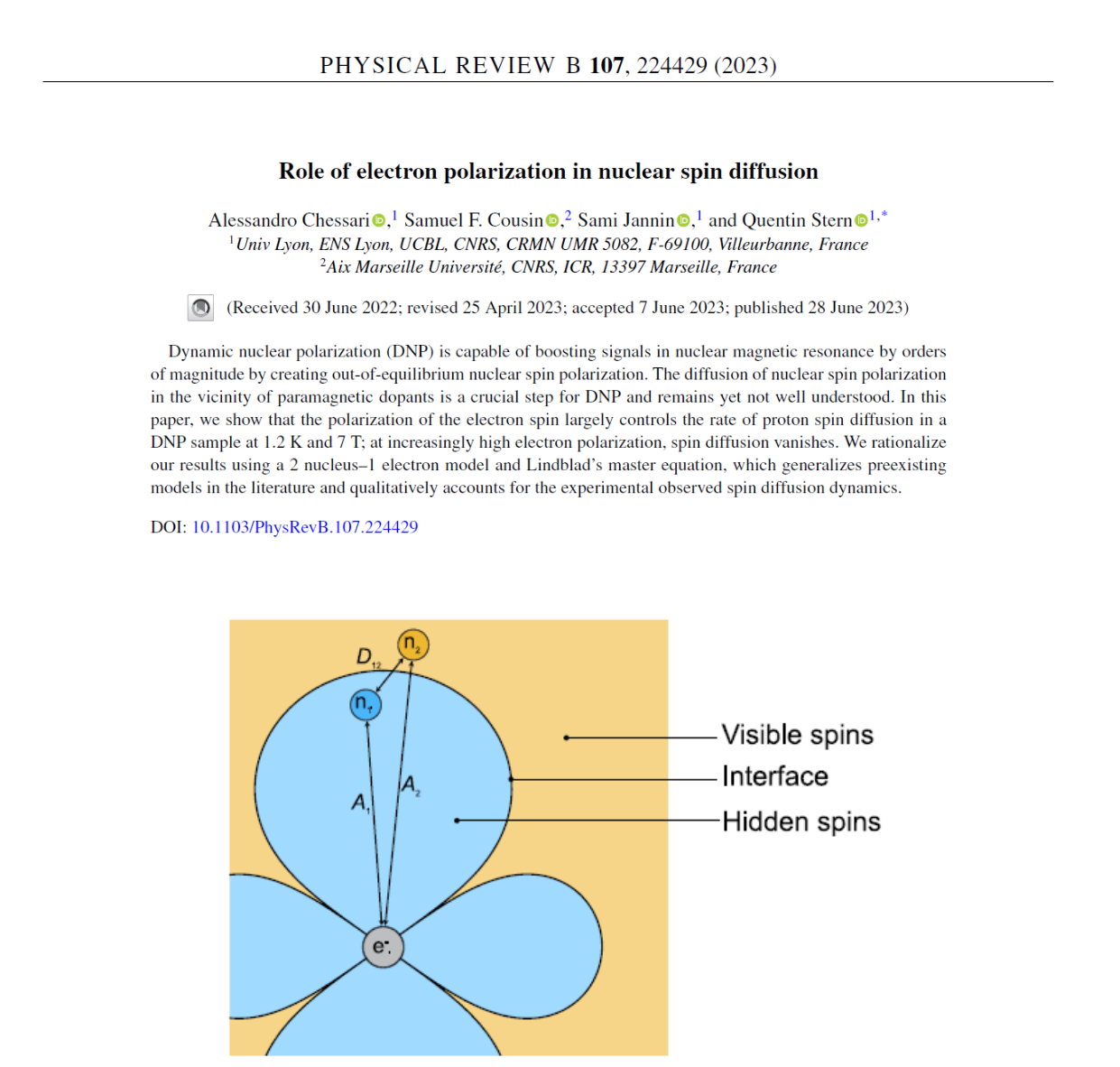Quentin Stern
Researcher in the field of nuclear magnetic resonance.
Current position
Post-doctoral researcher in Prof. Songi Han’s lab, at Northwestern University, funded by the Swiss National Science Foundation
“Chemist by training, I’m passionate about spin physics. What I enjoy most is confronting theory and experiment, using all possible creativity.”
About
Curriculum vitae and biography
Publications
Discover my peer reviewed work
Outreach & pedagogy
Videos and blog posts
Pushing the limits of magnetic resonance
Nuclear magnetic resonance is a powerful technique with a number of applications ranging from medical imaging (magnetic resonance imaging, MRI) to chemical and biological research. However, magnetic resonance is inheritently insensitive. That’s why you have to lie in an MRI scanner for so long. If we can boost the sensitivity of magnetic resonance, not only you don’t have to lie in the MRI scanner for long but we then have access to the detection of new phenomena. Increasing the sensitivity of magnetic resonance by orders of magnititude is made possible by hyperpolarization methods. My main research topic is one such method called dissolution dynamic nuclear polarization.
Recent work
The diffusion of nuclear polarization in the near vicinity of paramagnetic dopants is a crucial step for dynamic nuclear polarization (DNP). It is said to be limited by the so-called spin diffusion barrier. Yet it is difficult to track experimentally. In a recent study, we introduced a method to monitor this process, which we called the hyperpolarizarion resurgence experiment (HypRes, Stern, Q., Cousin, S. et al. (2021). Science Advances, 7(18), eabf5735). Our results showed that nuclear spin diffusion in the vicinity of electron spins was greatly reduced when temperature was reduced from 4.2 to 1.2 K (i.e. the operating temperature in common dissolution-DNP experiments).
In this new paper in Phy. Rev. B, we show that the level of electron spin polarization is determinant for nuclear spin diffusion. We demonstrate it both experimentally and in theory.
MATLAB for NMR spectroscopists
When the COVID crisis hit in 2020, I was in my second year of PhD. As I didn’t have access to the lab I couldn’t carry on my experimental work. I took the opportunity to go deeper in quantum mechanics and NMR theory. In an attempt to make use of this time home and to connect with others, I initiated a series of tutorial called MATLAB for NMR spectroscopists that I gave online to the people of my institute and that I later posted on youtube.
The content of the tutorials is the following:
- The basics of MATLAB programming
- Fitting models to NMR data (peak deconvolution and relaxation models)
- Simulating basic NMR experiments from scratch
- Simulating an INEPT experiment from scratch

